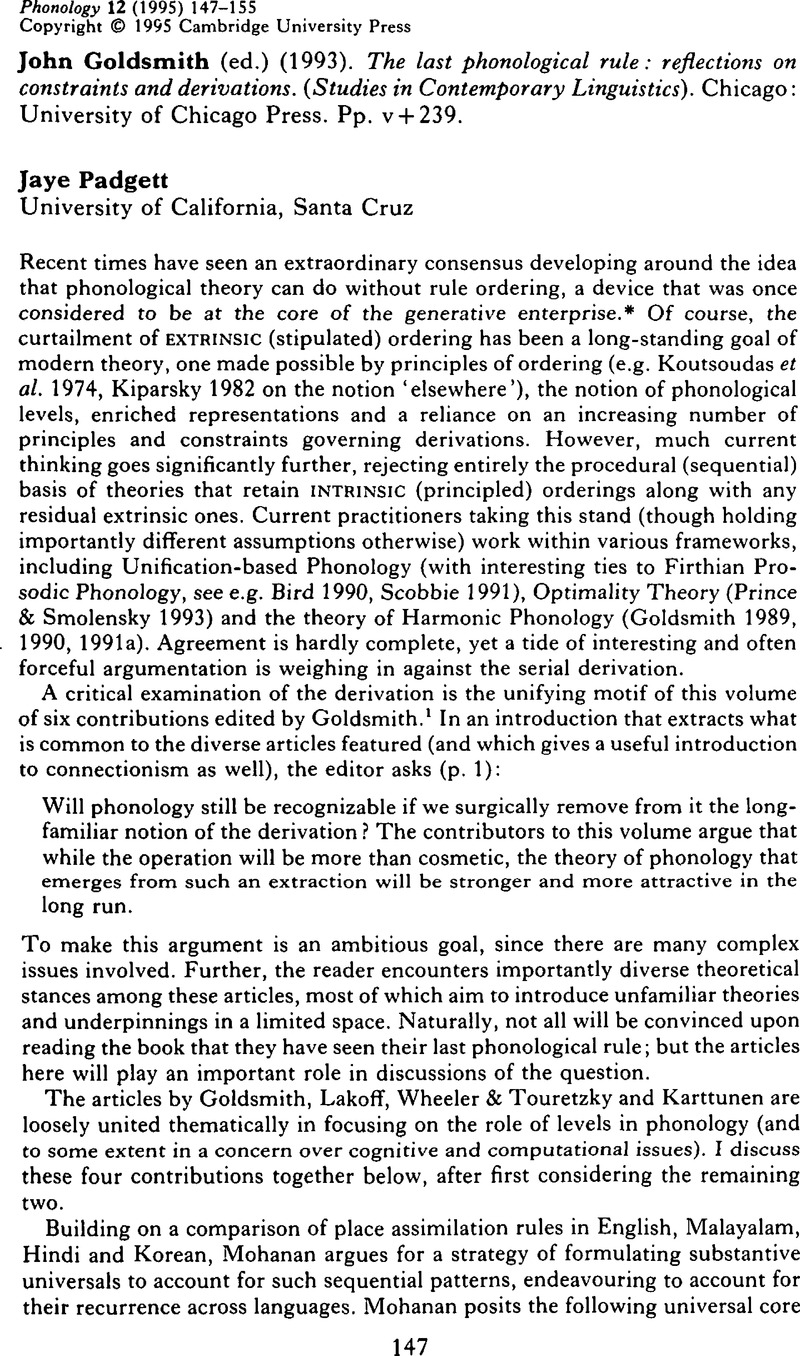Crossref Citations
This article has been cited by the following publications. This list is generated based on data provided by Crossref.
McCarthy, John J.
and
Prince, Alan
2004.
Optimality Theory in Phonology.
p.
77.
de Lazaro, Sergio R.
Ribeiro, Renan A. P.
Oliveira, Marisa C.
and
Longo, Elson
2022.
Research Topics in Bioactivity, Environment and Energy.
p.
255.



